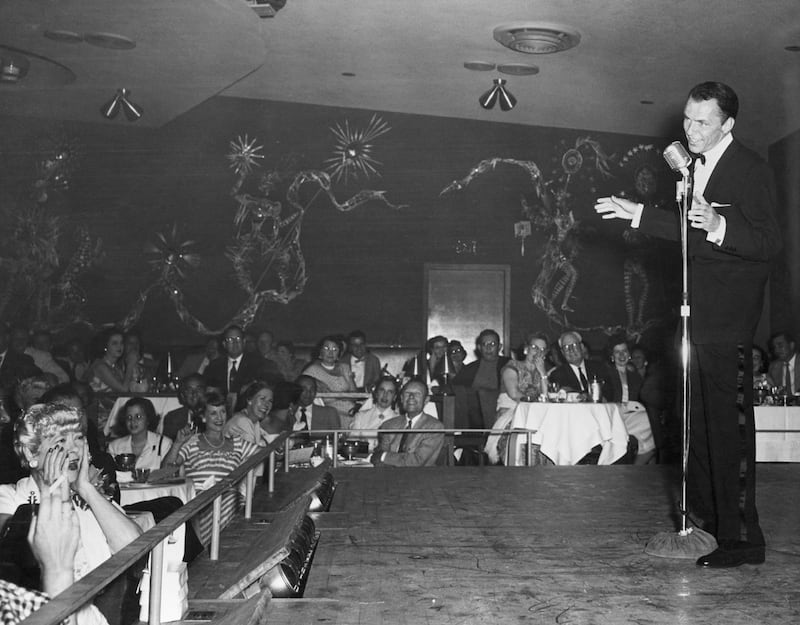As the sun sinks behind the mountains surrounding Las Vegas, one by one the lights on the city’s famous strip flicker on. New York may claim to be the city that never sleeps, but it is Las Vegas that truly comes alive at sunset.
The gaudy signs and faux Eiffel Tower somehow take on a majestic air as dusk approaches. As tourists swap their sneakers and backpacks for glad rags and high heels, the city shifts up a gear. It is with this spirit of joie de vivre and promise of what the night might bring that I prepare to step into the hot Nevada evening. Except, unlike my fellow visitors, I have not made a booking for one of the city’s famous shows.
By the time I reach the top of the queue for the concierge almost all that is left is a back-row seat to see Donny and Marie Osmond, a front-row ticket for the Chippendales, and an array of seats for Matt Goss, who was briefly famous in Britain in the 1980s as half of the boy-band duo Bros.
Sensing my helplessness, the concierge makes a suggestion: The Rat Pack Is Back, at 7pm at the Tuscany Suites & Casino. After all, Las Vegas was the home of Frank Sinatra's famous group of singer friends, he says with a smile. I go for it – even as my suspicions are aroused by his appearing to call a mate at the Tuscany to triumphantly declare another conquest. Still, how bad can it be?
Half an hour later, as I struggle through a dim side street a kilometre from the Las Vegas strip, passing the sign for Goss on the way, I find myself at the Tuscany. Alas, there is little sign of the Italian elegance its name suggests. Instead I am directed through a smoke-filled hall of slot machines to the Copa Room, which is meant to re-create the venue where Sinatra and his band played at the Sands Hotel and Casino.

This Copa Room is in fact a small conference facility converted into a concert space through the ingenious use of velvet chair covers.
With nowhere to hide as the drum roll begins from behind the makeshift curtain, I take my place among the audience of about 40 people, pining for Donny Osmond. And then the music begins.
A full eight-piece band miraculously appears from behind the curtain, the three-man cast – representing Sinatra, Sammy Davis jnr and Dean Martin – bounds on to the stage, and I am captivated.
As they move through the big, brash hits, waitresses serve cheap sparkling wine, and the audience begins to sing along. The three stars joke with the audience and crack not-so-funny politically incorrect jokes. “Hey, it’s the 1950s. We can say what we like,” one quips.
Sinatra insisted that Sammy Davis jnr be allowed to perform and stay at the Sands – an important statement on racial equality
Black-and-white footage of the old Sands Hotel, which graced the Las Vegas strip until it was demolished, in 1996, is a nostalgic reminder of another time in the city’s history. At its height the Sands was a mecca for the rich and glamorous. Sinatra’s famous acquaintances, as well as some shadier ones, flocked to the hotel.
The film Ocean's 11 was shot at the Sands, several albums were recorded in the Copa Room and Sinatra himself eventually bought part of the hotel and moved in. But despite the singer's shortcomings – he fell out with the owners over debts, and the hotel fell into disrepute – the Sands also played an important role in the United States' civil-rights movement.
When Nat King Cole performed there Sinatra noticed that he never ate in the diningroom. He was furious when he discovered that Cole's race was the problem, demanding that he be treated equally. Similarly, he insisted that Sammy Davis jnr be allowed to perform and stay at the hotel – an important statement on racial equality.
Back in the modern-day Copa Room the band deliver one final rendition of New York, New York. As the show concludes the audience erupt in applause, and the cast line up at the exit to meet their new fans.
The slot machines and smoke loom behind them, a reminder of the reality of present-day Las Vegas. But for these two hours we have been transported, however briefly, into the past, and reminded of a different, more glamorous chapter of American history.










